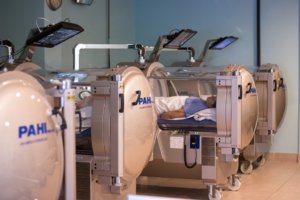AUTISM GROWTH
 The Centers for Disease Control and Prevention has concluded the prevalence of autism has risen to 1 in every 59 births in America, up from 1 in 166 in 2004. More awareness has helped account for the rise in autism rates. Autism is classified as a complex developmental disability defined by certain behaviors that can go from mild to severe, and includes Asperger’s syndrome. In 2013, the CDC put it all under the umbrella diagnosis of autism spectrum disorder. It is defined by two categories, impaired social communication or interaction, and restricted… or repetitive behaviors. They are symptoms that hurt the person’s ability to function properly in school, work, and life in general. Autistic patients also have trouble with sequencing, are resistant to change, and have trouble with sequencing.
The Centers for Disease Control and Prevention has concluded the prevalence of autism has risen to 1 in every 59 births in America, up from 1 in 166 in 2004. More awareness has helped account for the rise in autism rates. Autism is classified as a complex developmental disability defined by certain behaviors that can go from mild to severe, and includes Asperger’s syndrome. In 2013, the CDC put it all under the umbrella diagnosis of autism spectrum disorder. It is defined by two categories, impaired social communication or interaction, and restricted… or repetitive behaviors. They are symptoms that hurt the person’s ability to function properly in school, work, and life in general. Autistic patients also have trouble with sequencing, are resistant to change, and have trouble with sequencing.
Autism is an increasing medical problem facing our future generations. Autismspeaks.org finds nearly half of 25 year-olds with autism have never held a paying job and will need ongoing care. It also says over the next decade, an estimated 500,000 teenagers will enter adulthood and age out of school based autism services.
EARLY DETECTION
The American Academy of Pediatric says early diagnosis and intervention is necessary to improve function. With many treatments not covered by insurance, researchers estimate it costs up to $2.4 million for lifetime care.
 Pediatricians should screen babies for developmental language and social delays at every check-up. According to new in-depth research by the University of Miami’s Miller School of Medicine, injuries during birth and shortly after delivery can cause blood flow to decrease to the brain. It found this can lead to autism with nervous system damage and cognitive and psychological problems. A viral infection during pregnancy can also contribute to an autism diagnosis.
Pediatricians should screen babies for developmental language and social delays at every check-up. According to new in-depth research by the University of Miami’s Miller School of Medicine, injuries during birth and shortly after delivery can cause blood flow to decrease to the brain. It found this can lead to autism with nervous system damage and cognitive and psychological problems. A viral infection during pregnancy can also contribute to an autism diagnosis.
Doctors usually hold off on a diagnosis though until a child is a year and a half old. A toddler might appear to be doing well, meeting developmental milestones with normal activity and speech, and then they regress with a marked decline. All of a sudden, they quit talking, withdraw and start their stemming activities. This could be rocking or repetitive movements. Other parents may notice for the first time that their child has behavioral and cognitive problems, once they enroll in school.
GUT LINK – DIGESTION & DIET
 There is no specific medical treatment for autism, but at Johnson Medical Associates, we examine a wide variety of stimulating factors that can contribute to the condition, including heavy metals and toxins, foods, metabolic problems, allergies, and immune deficiencies. Treatment includes diet modification, specific food avoidance, nutritional support, and hyperbaric oxygen therapy, among others.
There is no specific medical treatment for autism, but at Johnson Medical Associates, we examine a wide variety of stimulating factors that can contribute to the condition, including heavy metals and toxins, foods, metabolic problems, allergies, and immune deficiencies. Treatment includes diet modification, specific food avoidance, nutritional support, and hyperbaric oxygen therapy, among others.
According to “Spectrum News,” there’s a common link among autistic children and chronic inflammation in areas of the brain and the intestinal tract. Hyperbaric oxygen therapy can help with that because it has anti-inflammatory effects. Most parents know their autistic child can be picky about what they eat. They can have diarrhea, poor digestion and abdominal pain. Some autistic children also have food allergies and are gluten sensitive, so you need to put them on the right diet. Parents can keep a log of what irritates their child’s stomach and any changes in eating habits. If there is low muscle tone in the intestines or a lack of strength in the colon, it can cause chronic constipation. The gut can also be filled with abnormal microorganisms.
The National Institutes of Health published a story from “Frontiers in Cellular Neuroscience” that shows an increasing body of evidence that the gut-brain axis takes part in the development of the Autism Spectrum Disorder. Staff at Johnson Medical Associates run tests to determine gastrointestinal problems, food sensitivity or gluten intolerance to figure out exactly what needs to be done. The next step is a nutritional plan the child will actually eat, so they can get as healthy as possible.
TREATMENT BREAKTHROUGH – HYPERBARIC OXYGEN THERAPY
 The Autism Support Network has concluded hyperbaric oxygen therapy is beneficial for those with autism. Air in the chamber is pressurized. A patient breathes a hundred percent oxygen over a period of time, and that increases oxygen to all the tissues in the body, including the brain. It promotes healing at a quicker rate. Your body’s cells need oxygen to function. Your cells use oxygen to break down sugar and release energy. Many autistic children’s brains have trouble with their connections and wiring, kind of like a short circuit.
The Autism Support Network has concluded hyperbaric oxygen therapy is beneficial for those with autism. Air in the chamber is pressurized. A patient breathes a hundred percent oxygen over a period of time, and that increases oxygen to all the tissues in the body, including the brain. It promotes healing at a quicker rate. Your body’s cells need oxygen to function. Your cells use oxygen to break down sugar and release energy. Many autistic children’s brains have trouble with their connections and wiring, kind of like a short circuit.
At Johnson Medical Associates, we’ve had a number of autistic child patients, who have developmental and speech delays. They’ve worked really hard with an occupational therapist, and once you put them in a hyperbaric oxygen chamber, they’re able to get better muscle tone. They begin to speak and focus. Their cognition levels improve. It’s a dramatic difference, and parents are overjoyed when their child is able to look them in the eye.
